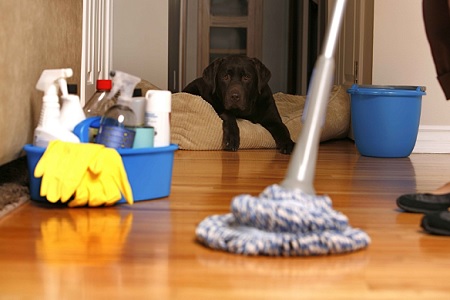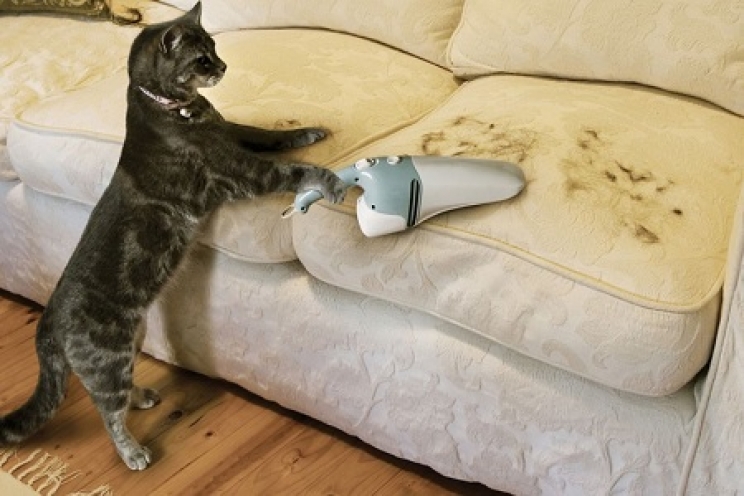Litter must be emptied, hair must be removed, bowls to be washed and floors to be disinfected and mopped. These are daily operations that dogs and cats owners must face to ensure the cleanliness and hygiene of the house. However, do we really do them right? Let's find out how to clean and disinfect the house and our animals object in an effective and natural way, but above all without putting their health at risk.
The litter box
Cat owners have a very important and often annoying task: cleaning the litter box. All cats, in fact, need at least one litter box to be able to do their own needs. The problem, however, is that if these are not removed often enough or if the litter box is not emptied regularly, the odours will spread throughout the house.
The type of litter we use inside the house plays an essential role in the odours of our home. However, it is essential to ensure an excellent level of hygiene and cleanliness, without harming the cat.
Here's what we need to do.
- Empty the toilet bowl entirely, removing even the most evident encrustations with a shovel;
- Apply white vinegar to the most encrusted areas and add boiling water;
- Let it act for at least 30 minutes;
- Eliminate the mixture of water and vinegar;
- With a cloth remove the encrustations, which will have softened thanks to this mixture;
- Dry the litter box and sprinkle the entire bottom with common sodium bicarbonate;
- We pour a homogeneous and fairly thick layer of clean litter.

With this simple operation, the encrustations can be permanently removed thanks to the vinegar, while the bicarbonate will ensure an excellent seal against odours, as well as a high level of hygiene.
The floors
We must never use ammonia and bleach to clean floors, especially if your dog or cat tends to go to the toilet around the house. Ammonia is also contained in the urine, so the animal would sense its presence and would try in every way to cover it by peeing everywhere.
Bleach, on the other hand, releases very volatile substances, which can be easily inhaled by us and our animals. Think, moreover, that the dog and the cat are much shorter than us, so the distance between their mouth and the floor is minimal, so they would instantly breathe the bleach in. In addition, this product misused by many pet owners tends to fix odours rather than remove them.
There are detergents on the market specifically designed to ensure excellent floor hygiene, in a totally safe way for animals. Alternatively, choose an organic detergent and combine it with hot water.
Going to the toilet on furniture and carpets
It may happen that our four-legged friend chooses to "free himself" on the sofa, bed or carpet. To remove urine, stool or vomit stains from tissues, we need to follow a few steps:
- Sprinkle the area with bicarbonate, which will absorb moisture and odours;
- In a spray bottle, combine white vinegar with hot water and spray on the stain;
- We wait for it to dry;
- With a toothbrush we rub the mixture;
- Rinse thoroughly with a damp sponge.
Alternatively, we can also use oxygenated water (hydrogen peroxide):
- In a spray bottle, combine white vinegar with hot water;
- Spray the mixture on the stain;
- Let it dry;
- Mix some baking soda in a bowl with a finger of oxygenated water and a few drops of neutral soap;
- Apply the mixture with a toothbrush;
- Rinse thoroughly with a damp sponge.
The bowls
The dog and cat bowls should be washed thoroughly every day. Food residues could deteriorate, becoming harmful to the animal and would also smell badly after a while. We use boiling water, which will soften food residues and sterilize the bowls. We can use a few drops of neutral soap, to be rinsed thoroughly.
After we put all these tips into practice, pets' stains and smells will be a distant memory.










